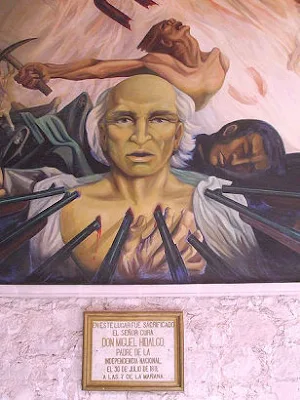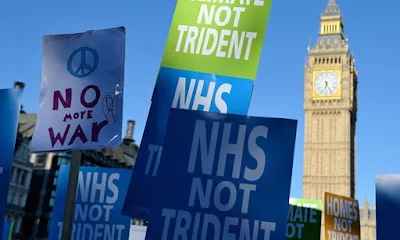Over 150 renowned international writers, poets, and literary figures, including
Alice Walker, Dave Eggers, Natasha Trethewey, Naomi Klein and Susan Abulhawa have
signed a petition calling for the release of jailed
Palestinian poet , Dareen Tatour.
Dareen a 33-year-old Palestinian citizen of Israel from the village
Al-Reineh near Nazareth,
Dareen has been writing poetry since she was 7. She is also a
photographer, and has toured villages in present-day Israel that were
depopulated of their original Palestinian inhabitants during the Nakba, As well as capturing images of these villages, she has set out to tell stories about the people who lived in them.
Her photographs have been displayed in a number of exhibitions. She also directed a short
documentary about the ethnically cleansed village of
Damoun.
The Latest Invasion, her first collection of poems, was published in 2010.
was arrested by Israeli authorities in October
of 2015 for a series of poems she posted on her own personal Facebook
page and YouTube during the height of latest wave of violence between
Palestinians and Israelis. She was charged with incitement to violence
and identifying with a terrorist organization. She spent several months in three different jails – enduring five
separate interrogations – before being confined to house arrest in a
rented apartment in a suburb of Tel Aviv since January.
The main clause of her indictment was based on a poem that she had
allegedly posted on YouTube under the title: “Qawem ya sha’abi,
qawemhum” (Resist my people, resist them). There is nothing actually illegal in the poem not even according to Israel’s laws.Although the poem urges resistance to Israel, it does not call for
specific acts of violence. Rather, it draws attention to violent attacks
on Palestinians by Israelis. But the context matters too, and
the poem came out against a backdrop of Palestinian youths clashing with
the occupation forces. And the images of these, according to the
Israeli prosecution and media, are of “Palestinians engaged in terrorist
activity”! Dareen joins over 400 Palestinians who have been punished and targeted for their posts on social media. Palestinians often found guilty because they do not like their oppressors.
Tatour faces up to five years years in prison, according to her lawyer. On Sunday, June 26, leading Israeli newpaper Haaretz ran a board editorial titled
“Free the Palestinian Poet, Arrested for Expressing her Opinions.” The justice system did not listen
.The following day, a
few Israeli writers held a solidarity event, and Dareen Tatour wrote an open letter of thanks, published by the website
Free Haifa .
The petition which is still open to ignatories can be found here:-
https://jewishvoiceforpeace.org/dareen/
It reads as follows:-."We believe in the
rights of artists and writers to freely express their artistic vision,
and share work freely. The Israeli government’s actions reveal a desire
to silence Tatour, part of a larger pattern of Israeli repression
against all Palestinians," the literary figures stated in their
petition.
"Expressing resistance to oppression and occupation through poetry is by
nature non-violent and should not be criminalized by any government,"
they added.
This petition marks the launch of an international solidarity campaign
organized by Jewish Voice for Peace and Adalah-NY to demand the release
of Tatour and to draw attention to the widespread arrests and detentions
of Palestinians for political expression on social media, as well as
Israel’s targeting of Palestinian writers and artists.
Tatour is banned from the entire northern district of Israel as well
as from using the internet. She is forced to wear an electronic ankle
bracelet which monitors her movements. .
The literary organization PEN in response to sustained pressure, released a
statement on Tatour’s persecution but sadly denied Tatour’s very self-identification as a
Palestinian, the group called her an “Arab-Israeli” and did not call for her release or failed to
mention Israel’s ongoing military occupation.
In a brief statement sent to Jewish Voice for Peace on 11 July Tatour explained the effect that her
imprisonment has had on her work.
“The poem, if it remains on paper, only adds to its writer’s worries
and fatigue. The worst thing that can happen to an artist in general,
and a poet in particular, is to be imprisoned in the democratic era in
which we live for expressing their opinion,” Tatour writes.
“Imprisonment is tantamount to cutting the cords of feelings and
emotions whose letters connect between what they are writing and the
people,” she adds, “and if this communication is cut there is no value
to all to what is written by this poet, no matter how outstanding their
style. Actually there is no value and meaning to the human existence of
the individual in this democracy and basically no value to this
democracy.”
“My freedom, after nine months of harsh detention and exile, is a
guarantee to the endurance of freedom for every poet, writer and artist,
wherever they are,” she adds.
Pressure continues to mount on Israel to give Tatour that freedom.Award-winning poet, songwriter, and novelist, Naomi Shihab Nye,
referred to the way
Tatour’s use of the word “resistance” has been criminalized: “The word
“resist” – when it is resisting oppression and inequality – will always
be a gleaming, beautiful, positive word. In fact, it needs to be said
more often.” Writing poetry should not be considered a crime, Dareen just used her freedom of expresion and her pen to write about the plight of her people and the injustice they daily feel and encounter, I don't feel that this warrants any form of punishment.She comes from a long tradition of poets in Palestinian society who try to evoke and communicate and reveal their sense of anger and sorrow. Poets who carry the additional role of being spokespersons, who try to
articulate the struggles, desires, and political views of the people.
I would urge voices of good conscience and fellow poets to support Dareen's continuing plight, and join the call to free her.
Here, the poet Tariq al Haydar translates Tatour’s words into English:
Resist, my My people, Resist them
Resist, my people, resist them.
In Jerualem, I dread my wounds and breathed my sorrows
And carried the soul in my palm
For an Arab Palestine.
I will not succumb to the "peaceful solution,"
Never lower my flags
Until I evict them from my land
I cast them aside for a coming time
Resist , my people, resist them.
Reit the settler's robbery
And follow the caravan of martyrs.
Shred the digraceful contitution
Which imposed degradation and humiliation
And deterred us from restoring justice.
They burned blameles children;
As for Hadil, they niped her in public,
Killed her in broad daylight.
Resist, my people, resist them,
Resist the colonialist's onlaught.
Pay no mind to his agents among us
Who chain us with peaeful illusion.
Do not fear doubtful tonques;
The truth in your heart i stronger,
As long a you resist in a land
That has lived through raids and victory.
So ali called from his grave:
Resist, my rebellious people.
Write me as prose on the agarwoood;
My remain have you as a response.
Resist, my people, resist them.
Resist, my people resist them.
You can stay abreast of Dareen’s case at the following links :-
freehaifa.wordpress.com
facebook.com/FreeDareenTatour/.
Some new poems of hers in translation can be found here :-
http://www.pierrejoris.com/blog/?p=14810





















